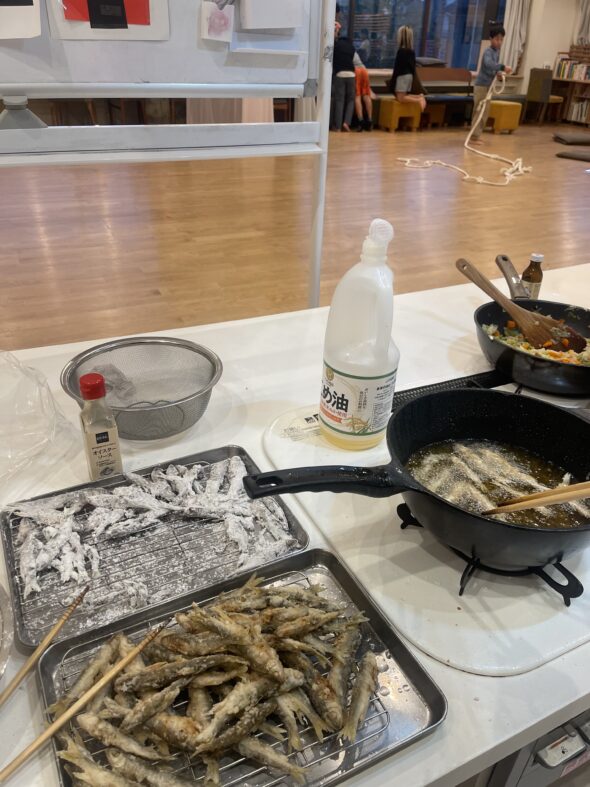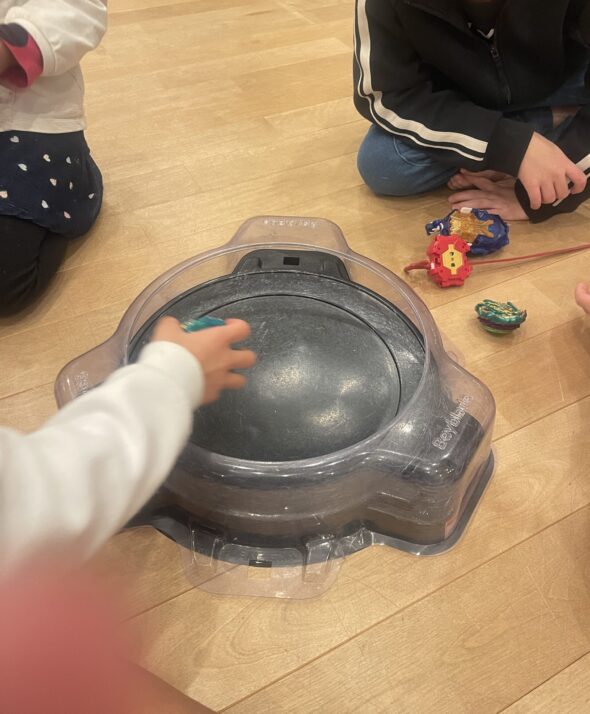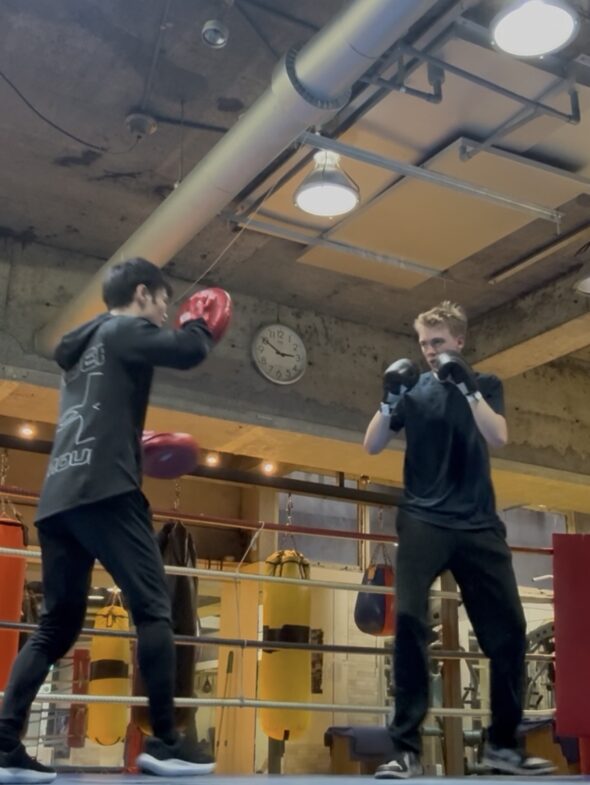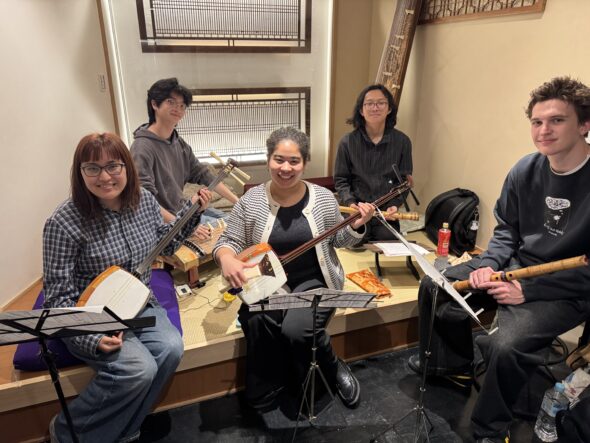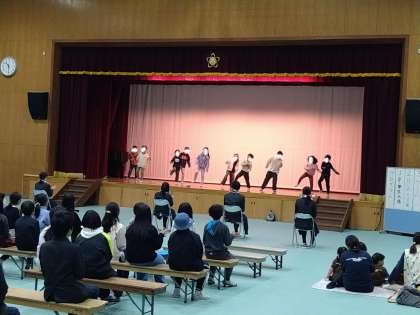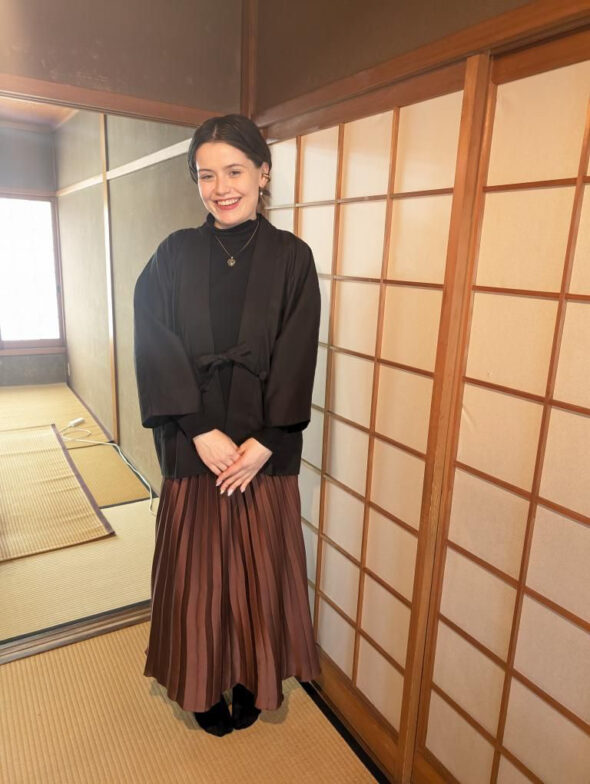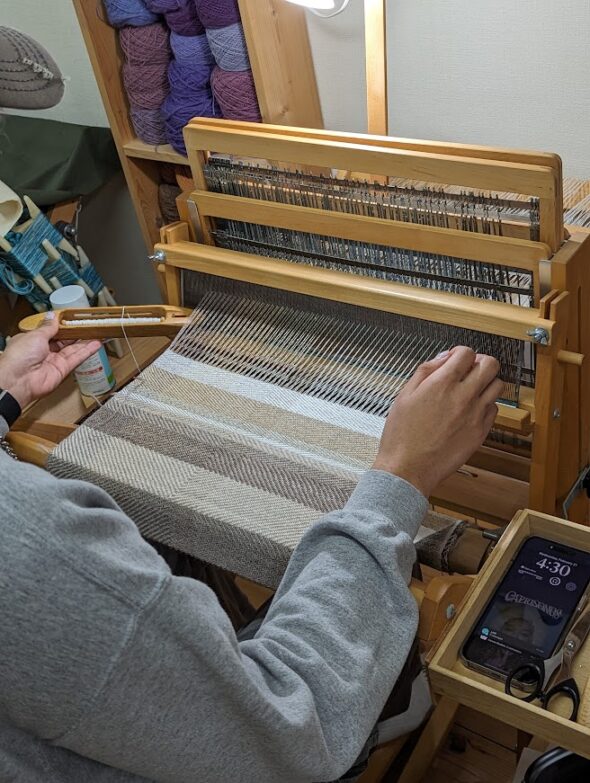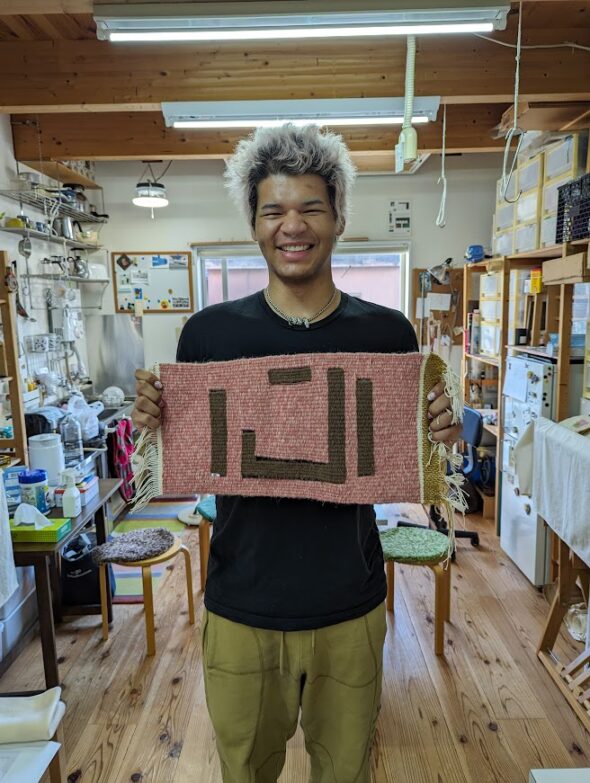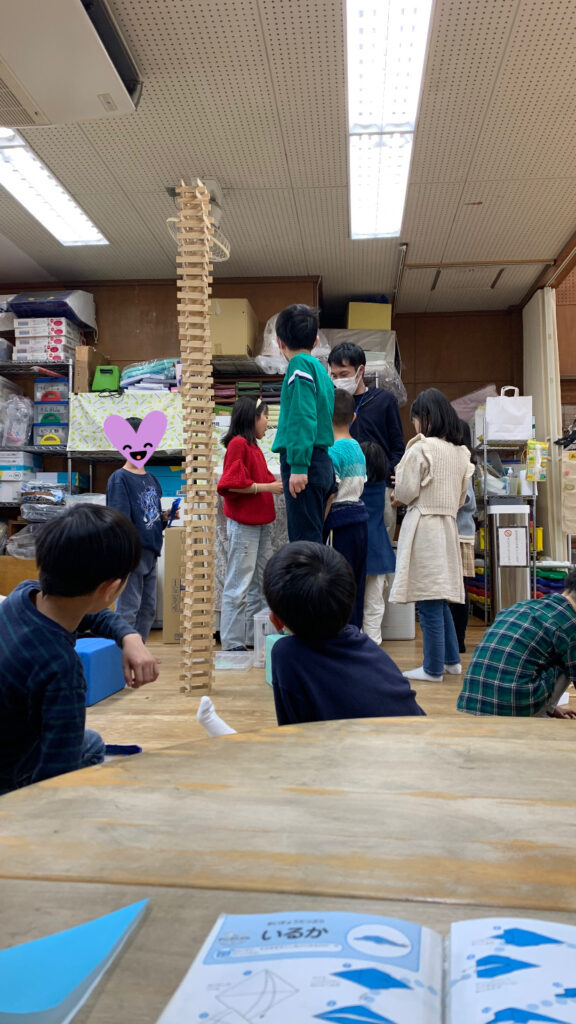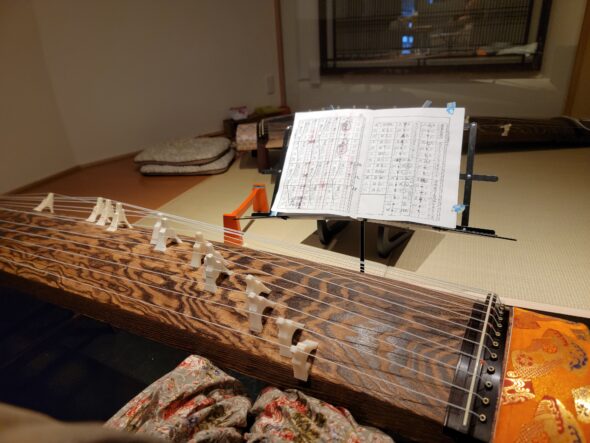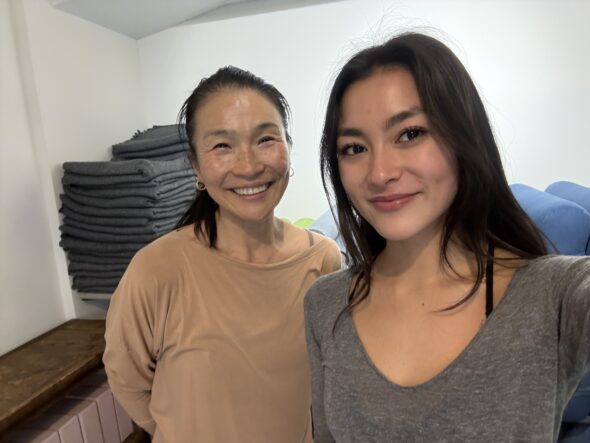
Me with my yoga teacher, Asako-sensei!
For my Community Involvement Project, I attended weekly Yin Yoga sessions at Tamisa Yoga Studio’s Teramachi-dori location. Our classes focused on breathing and slow pose transitions, which created an amazingly relaxed and centered environment. The instructor, Asako-sensei, was a kind and supportive presence for me throughout the semester and I always looked forward to attending her class. Studying abroad can be overwhelming and stressful at times, and going to Yin Yoga was a great way for me to practice mindfulness and calm while also learning about Japanese culture, communication styles, and social expectations. I loved my class and my teacher, and was able to build a lot of meaningful connections with my classmates during our post-class tea time. I highly recommend Tamisa Yoga studio to incoming students, whether they have experience with yoga or not!

